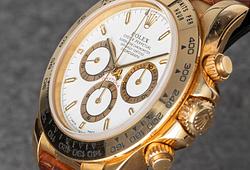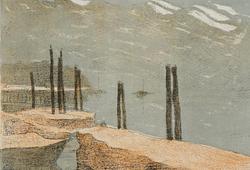Carl Milles
"The Wings"
The motif originally conceived in 1908. Plaster, green patina, height 121 cm.
Literature
M.P. -Verneuil, "Carl Milles. Sculpteur Suédois. Volume I", 1929, the motif mentioned at pp. 28-29 and illustrated p. 27 (under the title "Wings"/"Les Ailes" / "Flügel").
Henrik Cornell, "Carl Milles. Hans verk", SAK, 1963, the motif mentioned at pp. 45-46.
Erik Näslund, "Carl Milles -en biografi", 1991, the motif mentioned at pp. 86-87 and illustrated at p. 85
More information
Carl Milles' sculpture ”The Wings"” was created in 1908 and was cast in bronze in an monumental version in 1910.
Ancient Greek mythology, often being Carl Milles' source of inspiration, is also reflected in this piece, depicting a naked young man on boulders where he lifts, or is lifted by an eagle with widespread wings. The motif being the handsome Ganymedes who was abducted by Zeus, disguised as an eagle.
Artist
Carl Milles was a Swedish sculptor born in Lägga. He studied at the Technical School in Stockholm, at the Ecole des Beaux-Arts in Paris under Auguste Rodin and on study trips to Germany, the Netherlands and Belgium. In Paris he came to stay for many years and made a living as an ornament carver. He studied the animals in the Jardin des Plantes (the Zoological Garden) and was strongly influenced by Auguste Rodin. Milles made a breakthrough with a monument to Sten Sture in Uppsala. He exhibited at the World's Fair in 1900 and was later given a solo exhibition at the Tate Gallery in London. Milles was professor of modeling at the Royal Academy of Arts in Stockholm. Well-known sculptures in public places signed by Carl Milles are the "Gustav Vasa" statue at the Nordic Museum, "Orfeusgruppen" outside the concert hall in Stockholm and the "Poseidonfontänen" in Gothenburg.
Read more















































